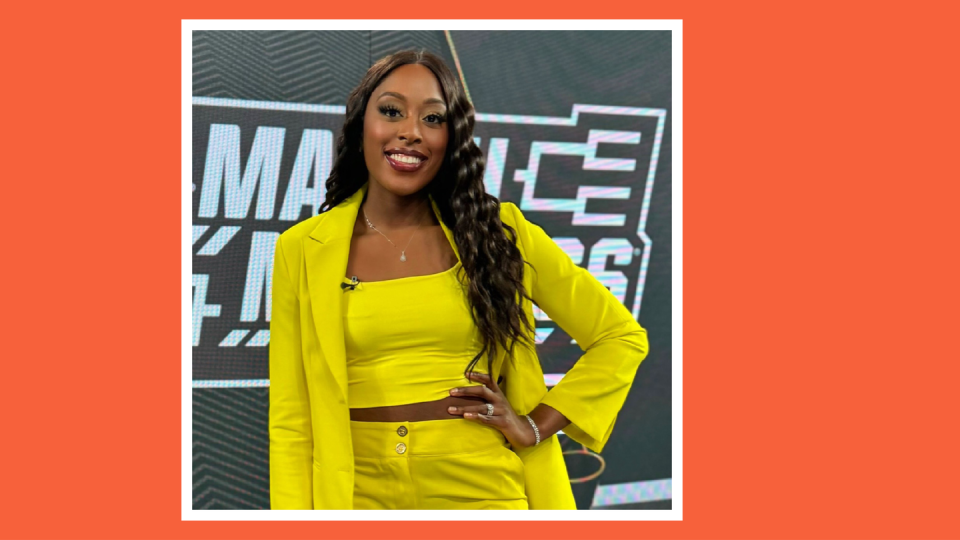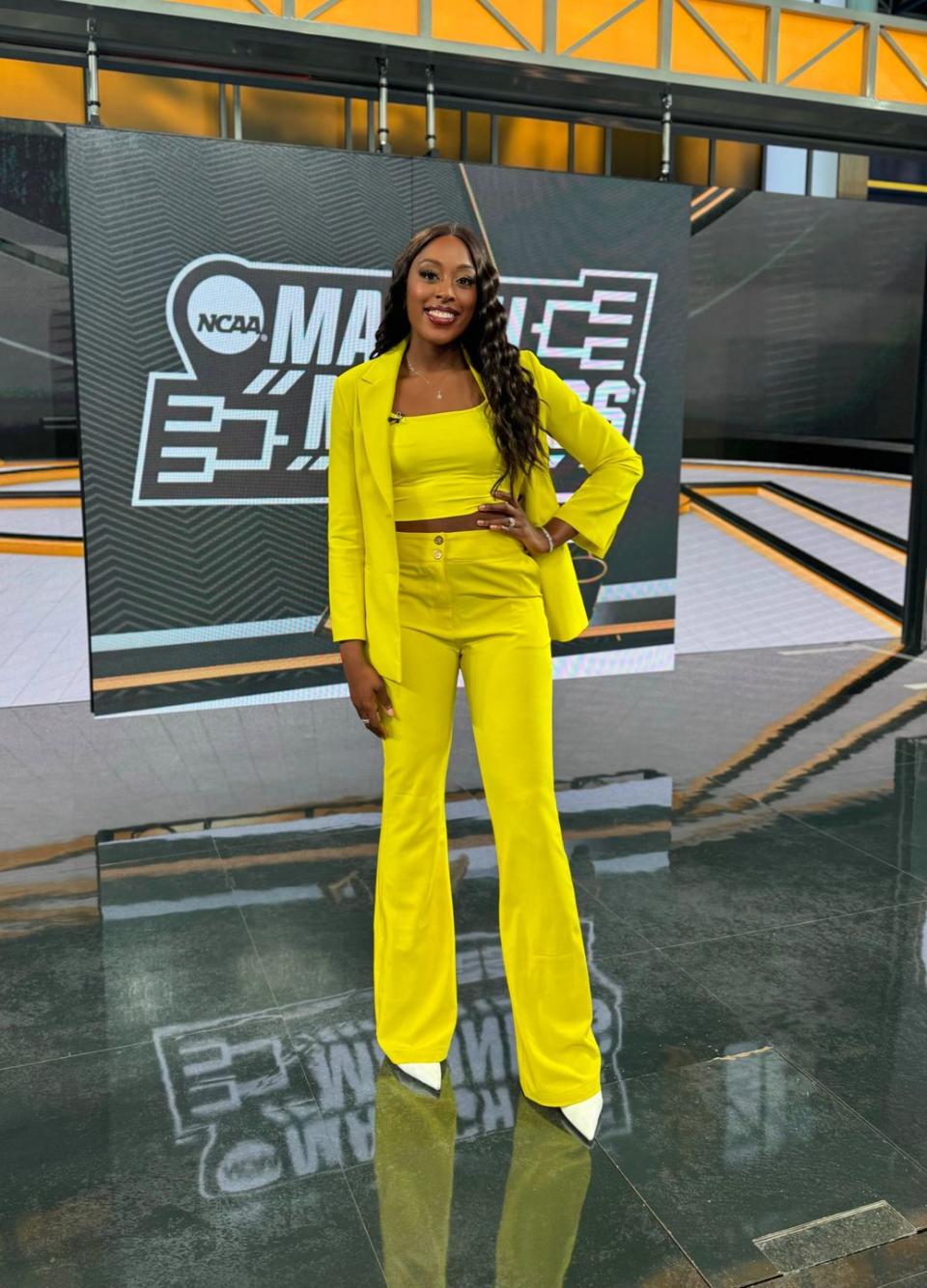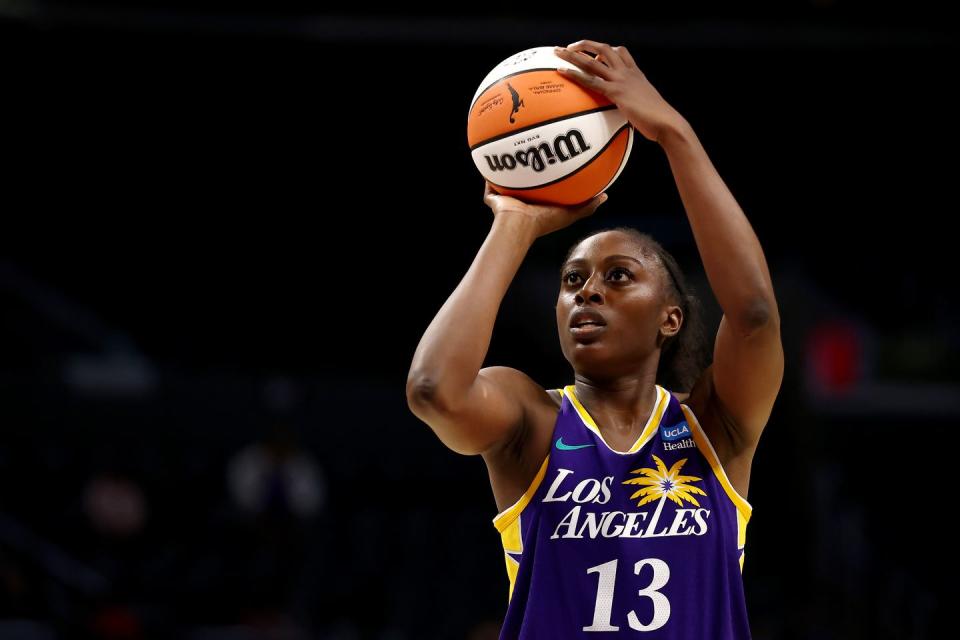Women’s Basketball Has Always Been This Good. But The New Generation Has The Spotlight Like Never Before.


Los Angeles Sparks forward Chiney Ogwumike is a two-time WNBA All-Star and the 2014 No. 1 overall pick in the WNBA Draft. At Stanford University, she played in three Final Fours. She is also a host and basketball analyst on ESPN and serves on President Joe Biden's advisory council on African Diaspora Engagement.
When I played basketball at Stanford a decade ago, there were always fans in the stands. At the time, there were a couple of juggernaut schools: Tennessee, UConn, Baylor, and Notre Dame. As college basketball players, we used to say, “We're not new to this—we're true to this.” Meaning, our fans knew that we played a great brand of basketball. We mastered the fundamentals. We took each game seriously. We knew that our fans got us.
But now, there's mainstream notice. The star power is everywhere. It’s so healthy for the game because there are so many different points of entry. You can find someone to love and root for. We're at a special moment in time where people are seeing what we have, what we are, and what we're capable of. Women's basketball has always been here and we've always had fans, but now a larger audience is appreciating what makes us unique.
For men, if you're a star, you play in college for a year or two and then you go to the NBA. But if you're a woman who wants to go pro, you have to be 22 years old. That means fans are able to follow you in college for longer. There’s continuity. And we’re at a point where the women's game is experiencing a revolution through a number of stellar players.
Athletes have more control of their story than ever before.
Women’s basketball used to be a product that was bottled up and sold as, “This is how we think women's basketball should be marketed. This is how women's basketball should be shown and portrayed.” Now, the players have firm control, particularly through social media and through how we participate with brands.
Now that college players can use their own name, image, and likeness (NIL) for deals, they are choosing to go to schools where they can be the story, and brands can help elevate that story. You can see Caitlin Clark play, then see her in commercials telling her story with her family. You see Angel Reese announcing that she’s declaring for the WNBA Draft in Vogue or sharing more about her manifestation routine on the cover of Women's Health.
Players are picking platforms that align with who they are—and the brands are there, because the eyeballs are there. It's the perfect storm.

Today's players have 28 years of women's basketball to learn from.
I'm part of a generation that grew up with basketball being played at the professional level in both the NBA and the WNBA. But my mentor—three-time WNBA MVP Lisa Leslie—said that when she grew up, she didn't have a women's league to watch. She and her contemporaries created it. But this current generation benefits from growing up and watching the pros in women's basketball. That's all they know, and it shows.
Caitlin Clark can say that she grew up watching her favorite player, Maya Moore, play in the WNBA. The league is only 28 years old. This generation has been able to turn on the TV and watch people that look like them—and want to be them—from a very young age. I learned the game by going to practice every day and having a coach.
A lot of the young stars now watch YouTube and have access to all kinds of [video] clips. If you want to be great, you don’t have to go find a coach and figure it out. Kids can look at Sabrina Ionescu, A’ja Wilson, Steph Curry or LeBron James' games, and then go do it in your backyard. Their game reflects that.
This generation embraces their own authenticity on and off the court.
It may be a silly analogy, but when I was growing up in the suburbs, we all wanted to wear Abercrombie jeans and Hollister tank tops. Everyone wanted to look alike and be cool and be part of the club.
But the way that this new generation embraces being different is so healthy, and it makes room for stars like Angel and Caitlin. These kids want to be different. They have braids and colors in their hair. They embrace their differences in a way that makes them unique—it’s a generation of confidence. And now, we're seeing that reflected at the highest stage of women's basketball. These women are confident in a way that shows a different mindset.
Caitlin faces the pressure of the world and finds sold-out arenas everywhere she goes. To still show up and put on a show—knowing that young girls and boys are flying thousands of miles to see her—takes a level of mental fortitude that is just different.
And Angel stays authentically herself in a system that has deemed her a villain. She has embraced the challenges, and continues to play at a high level. There's a saying, “Heavy is the head that wears the crown,” and her crown is very heavy. For Angel to be able to show up every day and choose to be herself, and then on top of that, to be a beast on the basketball court, takes a different level of mental fortitude.
Every generation had something special that contributed to why basketball is really good now.
These younger women's basketball players know how to play the game the right way, but I wouldn't say that this generation is better than the rest.
I'm going to play basketball at the highest level, knowing that maybe the eyeballs are not fully on the WNBA yet. But playing at the highest level births a generation of players that are more confident, and they're ready for the moment when it comes.
USC freshman JuJu Watkins is someone that I would look at and say that with her size and her skill, she could play in the WNBA right now. But people said that about Breanna Stewart and Brittney Griner before they came into the league too. The game has always been good.
The WNBA is one of the most competitive jobs in the world, which is what makes it so exciting.
There are only 144 roster spots. When you have that few spots, iron is sharpening iron. As pros, we have a mentality to fear no one and to get the best out of each other. No matter how good you are as a rookie, there's always an adjustment to the WNBA, because it's the most competitive league.
As pros, we also know that the game gets better every year, and so we stay on top of it. Even last year, if you watched the Las Vegas Aces versus the New York Liberty in the WNBA Finals, that’s no joke. We're talking about superteams now. We understand that you constantly have to get better as an individual and as a team in order to be successful.
That's the coolest thing about women's basketball: The bar just keeps raising.
You Might Also Like

